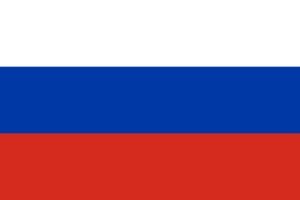Difference between revisions of "Language/Russian/Grammar/Gender-Recognition"
m (Quick edit) Tag: Reverted |
(Undo revision 280666 by Maintenance script (talk)) Tag: Undo |
||
| Line 1: | Line 1: | ||
{{Russian-Page-Top}} | {{Russian-Page-Top}} | ||
| Line 97: | Line 90: | ||
<span maj></span> <span gpt></span> <span model=gpt-3.5-turbo></span> | <span maj></span> <span gpt></span> <span model=gpt-3.5-turbo></span> | ||
<span links></span> | <span links></span> | ||
Revision as of 20:13, 14 June 2023
As a Russian language teacher with 20 years of experience, I know that one of the most challenging aspects for beginners is recognizing the gender of nouns. Fortunately, there are some useful tips and tricks to make it easier.
With the completion of this lesson, consider investigating these related pages: Questions & Tricky Adverbs.
Gender in the Russian Language
In Russian, nouns are grouped into three genders: masculine, feminine, and neuter. The gender of a noun determines which declension pattern is used when the noun changes its form in different cases.
Unlike in many other languages, there are few rules to identify the gender of a noun. It is impossible to do so solely by looking at a noun, and the gender of a noun must be memorized together with the noun itself.
However, there are some patterns that can help learners identify the gender of a noun:
- Masculine nouns often end in consonants, such as "-ов", "-ин", or "-ий".
- Feminine nouns often end in "-а" or "-я".
- Neuter nouns often end in "-о" or "-е".
Of course, there are many exceptions to these patterns, so it is important to memorize the gender of a noun with its spelling.
Gender Recognition Practice
To help you practice gender recognition, here are some examples of Russian nouns with their gender:
| Russian | Pronunciation | English |
|---|---|---|
| дом | dom | house (masculine) |
| машина | mashina | car (feminine) |
| окно | okno | window (neuter) |
| студент | student | student (masculine) |
| книга | kniga | book (feminine) |
| море | more | sea (neuter) |
Practice recognizing the gender of nouns as often as possible. With practice, it becomes easier to memorize the gender of nouns and therefore, to properly decline them in different cases.
Exceptions to the Rules
As with any language, there are exceptions to Russian's gender patterns. Here are a few examples:
- Some words for females are masculine, such as "доктор" (doctor).
- Some words for objects are feminine, such as "земля" (earth).
- Some words for abstract concepts are neuter, such as "счастье" (happiness).
Again, the best way to get used to these exceptions is to practice as much as possible.
Conclusion
Recognizing the gender of Russian nouns is a crucial step towards mastering the Russian language. While there are some patterns that can help learners identify the gender of a noun, it is important to remember that there are exceptions to these patterns. With practice and repetition, learners can become more confident in their ability to decline nouns properly in different cases.
I hope this lesson has been useful to you. Please feel free to leave a comment below if you have any questions or feedback.
Sources
Excellent job on conquering this lesson! Consider delving into these related pages: Present Tense Conjugations & Cyrillic Alphabet.
Other Lessons
- Кое То Нибудь
- А vs Но
- Common Mistakes
- Future Tense
- Tricky Adverbs
- Present Tense Conjugations
- Personal Pronouns
- Noun Adjective Agreement
- Conditional Mood
- Gender
